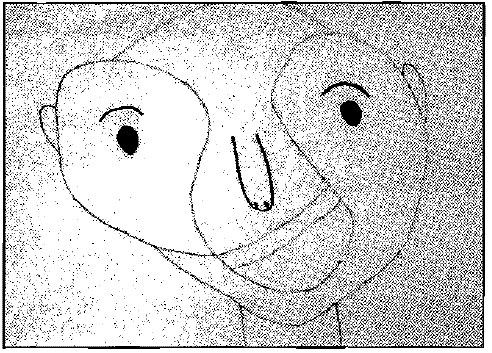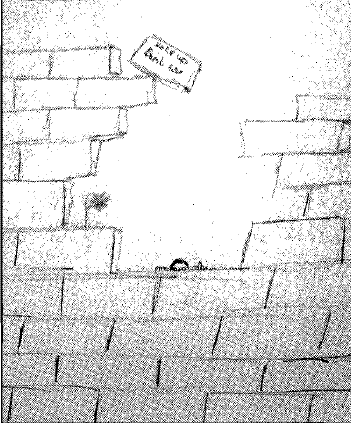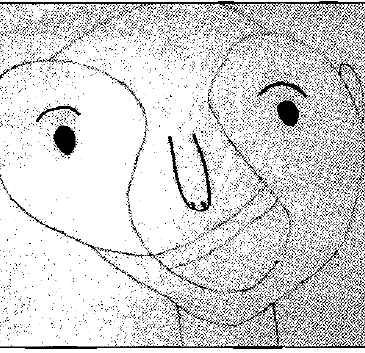Relapse is a major issue in substance abuse treatment: the majority of those struggling with chemical dependence return to use within the first 6 months after treatment (Brown, D'Amico, McCarthy, & Tapert, 2001). The intractability of addiction likely stems, at least in part, from its complex, multi-faceted nature. As a result, for most individuals the best course of treatment is a combination of biochemical and psychotherapeutic interventions. One psychotherapeutic intervention that shows promise in treating addiction is expressive art therapy. This week’s Addiction and the Humanities reviews recent case examples of the spontaneous production of self-portraits during art therapy for substance abuse.
Art therapy likely makes its most unique therapeutic contribution by providing an opportunity for clients to creatively explore their previously unacknowledged emotions, thoughts, conflicts, and impulses. This can result in self-understanding and positive change, both during the early stages and the relapse-prevention stages of recovery. This type of change opportunity is particularly limited among individuals whose neurological dysfunction compromises their verbal self-expression.
Creating self-portraits can be helpful in many ways (Muri, 2007). Creating an image of oneself provides a means for “stepping back” and reflecting on intense negative feelings. This added psychological distance can make clients more comfortable working through difficult issues. Often, self-portraits allow clients to gain an understanding that addiction is only a part of them and not the entirety of their being. By providing a representation of a client’s self-image, self-portraits provide important information to the therapist in a way that words cannot. In addition, sharing self-portraits with others presents an opportunity for clients to develop social and communication skills, which often enhances self-esteem.
Hanes (2007) presents perhaps the first clinical observation of the spontaneous production of self-portraits during art therapy for substance abuse. He focuses on the role of self-portraits in overcoming denial. Denial is an important barrier to change because over time, the addiction often causes the individual to construct a worldview that is harmonious with maintenance and progression of the disease (Grant, 1997). Hanes suggests that the spontaneous production of self-portraits indicates that the individual is “ready to contend with reality and confront painful truths that may alter his or her self-image” (2007, p. 33). Hanes provides two case examples obtained from individuals in an acute psychiatric hospital who were participating in group art therapy.
The first is “Bob,” a 50-year-old divorced man with two children, hospitalized for a depressive episode and alcohol binge. Bob had sought treatment several times in the past, but his sobriety had always been fleeting—presumably a result of his inability to recognize the severity of his addiction.
After a great deal of encouragement during a group art therapy session, Bob produced a self-portrait (Figure 1). He identified the contorted face as a portrait of himself while drinking. “That’s what I look like when I’m drinking,” he remarked. “I don’t like what I see.” Producing the self-portrait might have allowed Bob to recognize painful realities and begin to alter his self-image. After being released from the hospital, he began attending Alcoholics Anonymous and outpatient services. Figure 1: "Bob's" self-portrait. Reprinted from Hanes (2007)
Figure 1: "Bob's" self-portrait. Reprinted from Hanes (2007)
“Kevin” also produced an impromptu self-portrait during art therapy for substance abuse, although his story ends less optimistically. Kevin is described as a 23-year-old man, married with one child, hospitalized for polysubstance dependence. Like Bob, Kevin refused to verbally recognize the severity of his addiction. However, during an art therapy session, he produced an image of himself emerging from behind a large and crumbling cinder-block wall (Figure 2). Kevin spontaneously indicated that the wall symbolized his addiction, and the fact that parts of the wall were crumbling suggests that he was beginning to overcome his denial. Written on a cinder block placed precariously over the figure’s head is “Wake up dumb ass.” Kevin explained “I guess I need to get hit over the head. Maybe then I can deal with my drug problem.” Despite this heightened self-awareness, Kevin remained ambivalent about the severity of his addiction. He discontinued treatment and relapsed shortly after being released from the hospital. Kevin’s story highlights the fact that recognizing the severity of
one’s addiction does not automatically lead to recovery or even
help-seeking. Research indicates that problem recognition occurs, on
average, a full 9 years before individuals begin formal treatment.
During the intervening years, individuals experience a wide range of
legal, relationship, occupational, and financial problems, along with
tolerance, withdrawal, and neurological symptoms (Simpson & Tucker,
2002). Decreasing the economic barriers to health care, along with the
stigma associated with treatment, might help shorten the gap between
problem recognition and help seeking.
 Figure 2: "Kevin's" self-portrait Reprinted from Hanes (2007)
Figure 2: "Kevin's" self-portrait Reprinted from Hanes (2007)
In sum, clinical observation suggests that producing self-portraits
during therapy for substance abuse might be helpful to combat the
denial often associated with addiction. This is consistent with recent
work indicating that another innovative method for combating
denial—exposing patients to videotapes of themselves experiencing
delirium tremens—seems to be effective in reducing relapse risk (Mihai,
2006). However, empirical investigations are needed to document the
extent to which the production of self-portraits contributes to problem
recognition and eventual recovery.
What do you think? Comments can be addressed to Heather Gray.
References





teen addiction treatment July 22, 2009
This makes a lot of sense to me from what we’ve seen in our case studies. It’s not that the compulsive players are suffering from an addiction akin to substance abuse, it’s rather that the videogames are a prop to hide behind.
-mj-